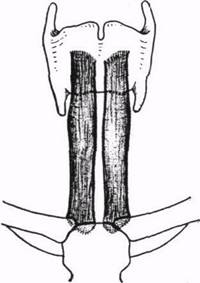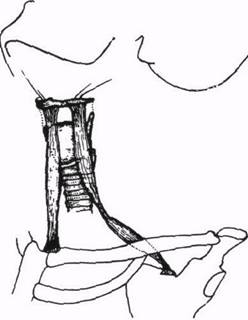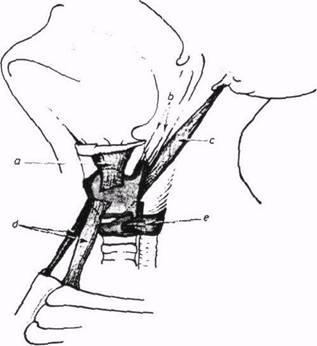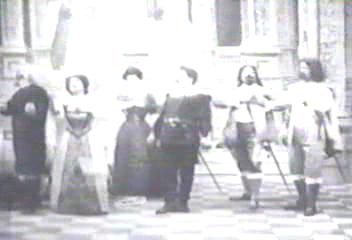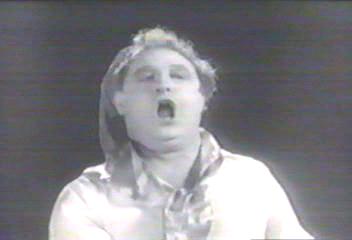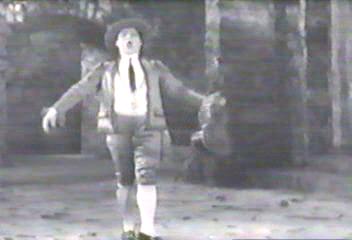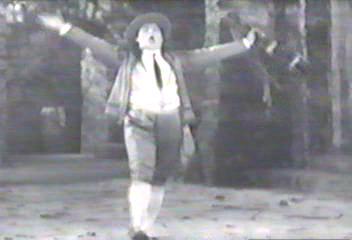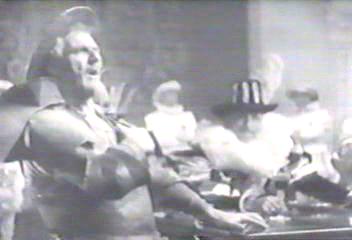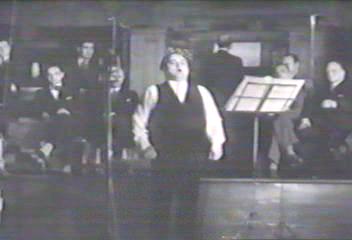Explaining "La lotta vocale"by Joseph Shore"To sustain a given note the air should be expelled slowly; to attain this end, the respiratory (inspiratory) muscles, by continuing their action, strive to retain air in the lungs, and oppose their action to that of the expiratory muscles, which is called lotta vocale, or vocal struggle. On the retention of this equilibrium depends the just emission of the voice, and by which means of it alone can true expression be given to the sound produced."Lamperti and his son, Giovanni Battista Lamperti, taught during a time when the quality and art of singing had diminished greatly from their height during the First Golden Age of Singing. They taught in an era very much like our own today. G. B. Lamperti wrote: "There has never been so much enthusiasm for the singing art, nor have there been so many students and teachers as of late years. And it is precisely this period which reveals the deterioration of this divine art and the almost complete disappearance of genuine singers and worse, of good singing teachers. What is the cause of this? How can it be prevented? By a return to the physiology of singing. (...) One part of the lay world says that there are no longer real voices, and the other that there is no longer any talent. Neither is right. Voices still exist, and talent too, but the things which have changed are THE STUDY OF THE BREATH, OF VOCALIZATION and of CLASSIC REPERTORY, as cultivated by the singers of former times" (Lamperti, Vocal Wisdom, p. 1, 1893).The point of this is NOT that some teachers/artists have always been crying vocal "wolf", saying that the end of singing is near, but that Lamperti's time was very much INDEED like our own. Garcia, Lamperti and Marchesi taught during an era of crisis when the decline of the art of singing was evident, as compared to the two earlier centuries of bel canto. And yet, only a few years after Lamperti's article, Enrico Caruso would make his debut and the Second Golden Age of Singing would be born. Who can say what impetus their teaching provided for this rebirth of singing? It was the teaching of the Lampertis, Garcia and Marchesi that indirectly allowed the Second Golden Age of Singing to emerge. It lasted almost a century. In the 20th century it robustly manifested itself in the cornucopia of great artists like Callas, Tebaldi, Björling, Corelli, Siepi, Hines, Sutherland, who graced the stage until the late 60's, even early 70's. Lamperti's analysis should sound amazingly modern. His analysis was correct and his prescription for cure was correct. The focus of this brief article is on one aspect of historic vocalism, "la lotta vocale". Let us look again at Lamperti's description: "To sustain a given note the air should be expelled slowly; to attain this end, the respiratory (inspiratory) muscles, by continuing their action, strive to retain air in the lungs, and oppose their action to that of the expiratory muscles, which is called lotta vocale, or vocal struggle. On the retention of this equilibrium depends the just emission of the voice, and by which means of it alone can true expression be given to the sound produced."The physical set-up for the breath has been detailed very well by Richard Miller in his many books on system and art in vocal technique. Miller is the apostle of appoggio and I believe he has accurately described the physical posture of singing. I will here simply give a brief summary. As the breath is silently taken in, either through the nose or the mouth, the epigastric-umbilical area moves outward, and the flanks, the lateral planes, expand. There is some slight expansion in the pectoral region as the sternum feels somewhat elevated when the lungs are comfortably full but not overcrowded, but the shoulders are relaxed and are never used to pull the rib cage up. The action of the diaphragm is dynamic and must be the result of reflexive coordination rather than voluntary rigidity in the abdomen. No expansion in the hypogastrium is involved in the proper breath. Foreign to appoggio are techniques which request that the singer forcefully push down and out in the hypogastrium – that area from the navel to the pubis. Equally foreign are descriptions that the singer should feel as if she were "pushing out the baby", or for a man, that he were undergoing difficult defecation. There are a variety of descriptions that come from these misadventures in the breath, e.g. that singing high notes should be like a "constipated push", or that the buttocks should contract and "crack the walnut." In my city a female teacher advises her female students to "sing with their vaginas open." The mind boggles. I suppose that teachers who give such advice would not be amused if I asked for voice science measurements for this purported expansion. One voice scientist satirically suggested that the teacher might vend a set of stretching instruments to go along with her instructions! I risk censure here, but perhaps the reader catches my meaning. There seems to be no end to the nonsense taught about breathing. In the "lotta vocale" that Lamperti describes, there is a dynamic "equilibrium" between the inhalation and exhalation muscles, not the forces of difficult defecation or delivery of a baby. In appoggio it is simply stated that we do not wish to allow the epigastric-umbilical area to move inwards too soon. The sense of maintaining the posture of inhalation is a dynamic equilibrium. It is called the "vocal contest" but that, as a euphemism, does not mean that localized rigidity is involved in it. Equilibrium refers to "balance," which is a word more properly descriptive of the lotta vocale. "To sustain a given note the air should be expelled slowly." This does not mean that the breath is consciously exhaled slowly because "the respiratory (inspiratory) muscles, by continuing their action, strive to retain air in the lungs, and oppose their action to that of the expiratory muscles". The proprioception of holding back the air is far stronger than any perception of the small amount of air required to produce tone. Therefore the proprioception is always that we take the breath and refuse to give in to exhalation. In other words, the larynx is not proprioceptively a blowing instrument. It is instead a myoelastic-aerodynamic instrument. Air is of course used to generate vocal fold vibration but it is a small amount in comparison to the large amount of air in the lungs. The singer can no more be aware of air flow in the larynx than he can feel the laryngeal muscles working. Any attempt to try to locally control air flow destroys equilibrium and starts the exhalation cycle. There is an enormous difference between what happens at the myoelastic-aerodynamic level of the mechanism and what is perceived proprioceptively. At the former level there is requisite air flow according to the reflexive control of the process of singing. In the latter there is only a sense of maintaining the inhalation posture and holding back air as the inspiratory muscles "strive to retain air in the lungs". In the simplest terms, we feel like we take the breath and do not use it. If the teacher or singer does not understand the two different levels, confusion is apt to reign in both exercises and vocalism. Let me give an example.
Several years ago while performing in an opera, I shared a dressing room with a bass of the current generation. He was a very talented bass
and seemed to have a promising career, but he had a teacher who did not understand these two levels. As I was walking into the dressing
room, I heard my bass friend make strange sounds like a fog horn, blasting a straight tone. I said, "Phil, what do you think you are
doing?" He said, The position of the body during the lotta vocale has been called "the Noble Posture," or "una nobile attitudine". We see this unfailingly in pictures of the great singers of the First and Second Golden Ages of Singing. Lamperti called the Noble Posture the position of a soldier at ease. Somewhat more explicit, Garcia said "The head (should) be erect, the shoulders thrown backward without stiffness, and the chest expanded first at its base." Even more explicitly his daughter, Pauline Viardot-Garcia, one of the greatest singers of all time, describes the position this way: "Holding (the body) erect, a little arched backwards, the head slightly elevated, the eyes looking straight forward, the feet placed somewhat in the second position... the weight on the backward foot." This is the position one will see in the turn of the 20th century motion pictures which captured Caruso and other great singers of the Second Golden Age of Singing. Notice she says that the head is "slightly elevated". This is not the sword swallowing position adopted by those who sing with an elevated larynx. It is instead a "slight" elevation and it appears to be very important for the high notes particularly. Part of the need for this "slight elevation" comes from maintaining a relatively low laryngeal stability throughout the range, especially in the head voice where laryngeal instability is likely to happen. It is not within the province of this brief article to detail the mechanics of laryngeal suspension, but a synopsis of the mechanism seems inescapable. "Suspension" means support by opposite pulls. A "suspension" bridge is one in which the load is supported by intricately strung cables which oppose one another. The larynx is suspended within a net of muscles, none of which are consciously controlled. Their action is a part of the reflexive system of "appoggio" and is learned through appropriate exercises. The muscles which lower the larynx by a downward pull are the sternothyroid muscles, which insert into the thyroid cartilage and pull down towards the sternum, somewhat towards 7 o'clock position, the sternohyoid muscles which insert into the hyoid bone and pull down towards the sternum, and the omohyoid muscles which insert into the hyoid bone and pull down over to the scapula. These three muscle groups we will euphemistically call "the front down-pullers."
The suspension system
Dr. Van Lawrence was one of the premiere laryngologists who worked with singers. He had this to say about the action of the front down-pullers: "In the last several years, we've become increasingly aware of the vital importance of the neck strap muscles (sternothyroid, sternohyoid, omohyoid) in high-range voice production – thanks in part to some work done at the Haskins Laboratories. These muscles seem to be necessary for stabilizing the main firm structures of the larynx so that the smaller and more delicate intrinsic laryngeal muscles can function optimally" (VOCAL HEALTH AND SCIENCE, NATS, p.49).Dr. Van Lawrence cautions singers who may have thyroid gland surgery to tell the surgeon NOT to cut across the straps and re-suture. To do so may cost the singer his/her high notes. Indeed this connection was seen when singers who had thyroid surgery had their straps cut, to allow the surgeon more room to operate. The sternothyroid, and sternohyoid muscles were cut and later sutured back together. The result was that the singers lost some of their high notes due to the loss of some muscular function. The essential action of the sternothyroid muscles brings into mention the role of the Noble Posture and especially the position Viardot Garcia called "the head slightly elevated". Studies of laryngeal postures were conducted by Frommhold and Hoppe using a cross-section of "outstanding international artists" and students. They found that "international artists were conspicuous without exception for a constant (low) posture over the entire vocal range" while students showed increasing postural change upwards during phonation of higher pitches. I have commonly observed that the great singers with whom I have performed, frequently tilt their head back slightly for high notes as though they were looking at the first balcony. Indeed, in my own singing, the highest, full voiced, extension of the baritone voice, G4, A4, B4, C5, may be sung with the head slightly tilted back, at least when singing full voice. Many voice teachers disparage head tilting, believing it puts the vocal instrument out of alignment. Certainly any excessive raising of the chin which also causes the larynx to rise would be deleterious. We are not talking about the sword swallowing position. But teachers must seriously ask why virtually all great singers slightly tilt the head for high notes. Vennard assumes that all head tilting causes laryngeal elevation, and calls such action "reaching for the high note". Why do great singers do it? We have pictures of Caruso, and many of the great singers of history with the head slightly tilted for the tones above the second passaggio. It cannot be simply to sing to the balcony. Sometimes there isn't one and singers still tilt the head. Certainly the auditory evidence indicates that such famous head tilters as Caruso and Corelli did NOT raise the larynx. Berton Coffin gives an answer which bears on the question of laryngeal suspension. He says: "...unless the head is tilted back there is not enough room for the depressor muscles (sternothyroid et al.) to make a downward pull on the larynx, which assists in bringing about the tensing of the vocal folds necessary for high notes..." It is true that a muscle's contraction pays off better when the muscle is somewhat stretched rather than bunched up on itself. If the head is slightly elevated the sternothyroid muscles have room to work and their contraction pays off better. Also suspension of the larynx would seem to be improved if the front down-pullers have room to work. Coffin then goes on to say: "Persons who bow their heads have difficulties with high notes because there is not room enough for the depressors to work and the cavity of the throat gives a pitch which is too low. This can be easily detected by thumping the throat with vocal cords adducted while raising and lowering the head... If more teachers would listen functionally with their eyes, when hearing operas and concerts, there would be more understanding and less fear of exploring the techniques of singing." Here Coffin indicates that a bowed head also bears on the issue of vowel migration and formant tracking. In aggiustamento of the vowel we raise the frequency of the first formant to more closely match the frequency of the fundamentals of the higher notes. The most commonly used techniques for doing so are increased jaw space and retracting the corners of the mouth. Coffin is indicating that head posture also bears on formant tracking since a slightly raised head raises the frequency of the cavity of air in the throat. If this is true, a slightly raised head for the highest notes would require less jaw space increase. That is generally important since too great a jaw space is apt to cause too much contraction of the digastric muscles and therefore pull up on the hyoid bone. It seems true that the slightly tilted head gives a higher cavity pitch in the pharynx. It also seems to be true that the suspension system is working more efficiently. BY THE SAME ACTION, the low posture of the larynx is maintained. This would explain the almost universal observation of slight upward head tilting among great singers and the description of this posture by such greats as Garcia. Two important voice scientists, Luchsinger and Arnold, confirm greater sternothyroid efficiency during slight head tilting (VOICE, SPEECH, LANGUAGE, 1965)! The small head tilt up for high notes is permitted within the Noble Posture of appoggio while the sword swallowing position is not. Appoggio as a system is not denying infrahyoidal action for the depressor muscles. It is only denying that conscious manipulation of them is appropriate. Look at videos of some of the great singers (e.g. Corelli, Björling, Del Monaco, Merrill, Warren, Tebaldi, Albanese, Siepi, Hines, Tozzi, Christoff, Bergonzi, Cossotto, Price, Yeend, et al.) and you will see the slight upward head tilt for high notes. Indeed, some of them show MORE than a slight tilt. The Noble Posture, as described by Pauline Viardot-Garcia, is the optimal position for la lotta vocale. Sometimes the singer must adopt strange body positions for a distorted character and the Noble Posture is impossible. How important it is then, to inform the body as much as possible under more normal circumstances by the Noble Posture. The equilibrium Lamperti describes, does not feel like localized rigidity in any area of the body. It feels like buoyant expectancy, a balanced readiness. It enables the singer to give "true expression". This is the real meaning of "cantare come si parla". Notice that according to Lamperti, the lotta vocale is required to enable the singer to give "true expression." There are those who do not understand this and think that the inflections of speech should be laid over into singing in order to give expression. Miller has written about this in many forums. Here is one: "One not infrequently hears well-intentioned public instruction in which young singers are admonished to sing lieder in a fashion that is fundamentally non-vocal. This approach is based upon a commendable realization that synthesis of word and music is a conscious aim of many lied composers, but unfortunately it forgets that expressive vocal sound is dependent upon the well-functioning physical vocal instrument as its medium. Such advice confuses desirable nuance with undesirable vocal mannerism.And yet in another article: "Extraneous technical maneuvers for achieving legato would be unnecessary if the skill of filling each note with equal dynamic levels of vibrant sound were mastered. (...) Legato need not be induced: it will be the result of the continuity of vibrant vocal sound. (...) The distortion of vocal sound under the assumption that artistry is enhanced should be resisted. The substitution of the inflections of 'emotive speech' for sustained singing is counterproductive to the musical and textual needs of elite vocal literature, including that of the lied and the mélodie. (...) Continuous vocal sound will of its own accord 'move' the phrase and give it 'direction'. The greater the reliance on free flowing vocal sound, the higher the capability for successful shaping of the musical phrase. (...) Continuity of vocal sound is the substance of legato. Communication of musical and textual values best occurs when sound, not interpretive gimmickry, is the medium of their conveyance." (Sept./Oct. 1992, The Journal of Singing)Lamperti's "true expression" is based on the technique of singing with la lotta vocale. In order to teach singers to have good expression we must teach them how to sing well. La lotta vocale is the principle necessary for proper usage of the breath. "Voices still exist, and talent too, but the things which have changed are THE STUDY OF THE BREATH, OF VOCALIZATION and of CLASSIC REPERTORY, as cultivated by the singers of former times." La lotta vocale is the "study of the breath", which G. B. Lamperti mentioned. The other two things are "vocalization", which means formation and aggiustamento of the vowel, and "classic repertory."
Frances Yeend:
Leontyne Price:
Joan Sutherland:
Lucia sextet with Caruso, Daddi, Journet, Scotti:
Giovanni Martinelli:
Giuseppe De Luca:
Again De Luca:
Fjodor Shaljapin:
Beniamino Gigli:
|
